Microsoft’s Surface lineup used to consist of just one or two models, and they were easy to differentiate. But over the years, Microsoft has continued to add to and expand the Surface line. For example, there’s now the Surface Pro X, an ARM-based computer that’s sure to be the future of computing. There are also several different laptops, including the Laptop Go, an affordable laptop that looks and feels every bit like a Surface device but comes at a lower price point.
With so many different models, how do you know which one is for you? That’s what we’re here for. Below we’ll walk you through each model in an effort to help you decide which Surface is the one you should get.
Surface Go 2
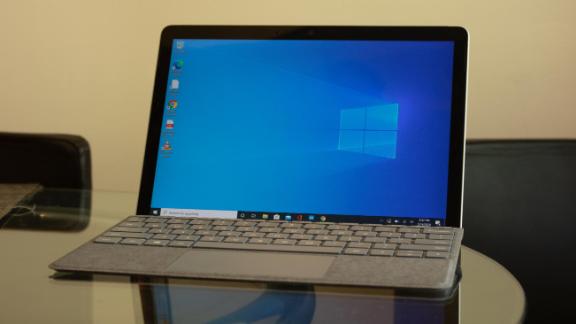
The Surface Go 2 is by far the smallest and most affordable Surface device in the lineup. Part tablet, part laptop, the Go 2 starts at $399.99 for the bare minimum. You get a tablet with a built-in kickstand and internal components that are just good enough. We won’t recommend getting the base model Go 2, simply because performance will be something it struggles with, especially if you’re multitasking or doing the occasional minor photo edit.
At $630, you can get a Surface Go 2 with an Intel Core M3, 8GB of RAM and 128GB of solid-state drive (SSD) storage. That configuration is more than enough to power through Excel spreadsheets while triaging your email inbox and dealing with Slack messages from co-workers.
For a remote learning student, the Go 2 offers portability, thanks to its compact size. A 10.5-inch display and an overall weight of just 1.2 pounds for the tablet portion make it easy to move around the house with or pick up and take to class.
With optional keyboard and pen support, you can convert the Go 2 from a svelte-looking tablet to a miniature laptop with some serious netbook vibes. The Go 2 Type Cover keyboard will set you back around $100, but you can find them on sale for around $70 if you look hard enough.
When testing the Go 2 ourselves, we almost immediately disabled Windows 10S, a streamlined version of Windows that limits app installs to only the Microsoft Store and provides other security features. But with the click of a couple of buttons, you can disable S mode and enable the full Windows 10 experience. Performance was still the same post-S mode, but we gained the ability to install programs from anywhere and have a Windows 10 experience we’re accustomed to.
The Surface Go 2 is a lightweight, portable 2-in-1 that’s convenient to tuck into nearly any bag. Battery life should be enough to get through a day of meetings or classes, but you’ll need to top off the battery if you plan on using it later in the day.
Surface Pro 7
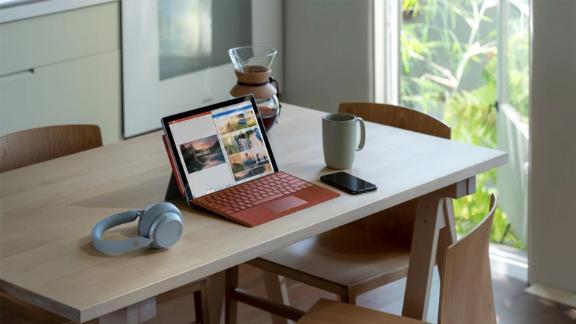
Arguably the most iconic Surface in the lineup, the Surface Pro 7 continues the trend of Microsoft setting the bar for the 2-in-1 market. That is, a device that works as a tablet or laptop without having to do much, if anything, to convert it.
Starting at $749, the Pro 7 can be configured with an Intel Core i3, 4GB of RAM and 128GB of storage. You can max out the Pro 7’s specs, with $2,299 getting you an Intel Core i7, 16GB of RAM and 1TB of storage. The foldout kickstand, just like on the rest of the Surface 2-in-1 lineup, has a sturdy hinge that lets you lay the 12.3-inch touch screen nearly all the way back. To use a dedicated keyboard, you’ll need to buy a Type Cover, which starts at around $160 but can be found on sale for as low as $119 depending on the color.
In addition to the keyboard, you can add the $64 Surface Pen to the Pro 7 for jotting notes or sketching in your favorite apps.
The Surface Pro 7’s design feels a little dated, especially when you compare it to the Pro X (which should be how all Surface 2-in-1s look). It’s known for its thick bezels around the display, but after using it for a bit, they’ll likely blend into the background and you won’t notice them.
The PixelSense display falls in line with previous Surface models, including the Surface Pro X, meaning it’ll be bright, crisp and clear. Battery life should be enough to get through a full day of use, but not much more than that. Microsoft claims 10.5 hours of life off of a single charge.
The Pro 7 is perfect for someone who wants a powerful Windows 2-in-1 that combines a tablet and laptop experience. The portability aspect alone is a huge draw to the Surface Pro lineup as a whole, and the Pro 7 picks up right where its predecessors left off.
Surface Pro X
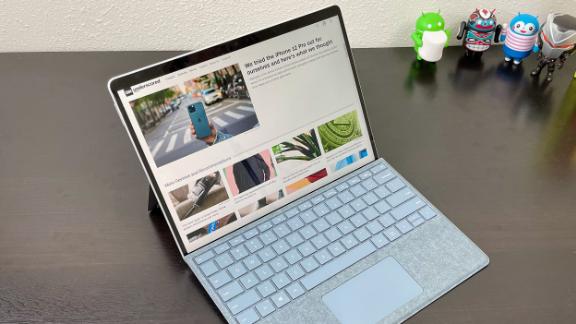
The Surface Pro X is arguably the best-looking Surface 2-in-1 Microsoft offers. Thin bezels surround a gorgeous 13-inch display, built-in LTE connectivity — and an optional keyboard and Microsoft Pen accessory pack converts it from a tablet to a full-on laptop.
Only, instead of using Intel’s latest processor, the Pro X uses an ARM-based processor developed in partnership with Qualcomm. The benefits of switching to an ARM processor is improved battery life, which currently comes in around 15 hours, and performance gains.
However, until developers build their apps to support the different processor, some apps simply won’t work, while other apps will run, but are often sluggish and buggy.
The Surface Pro X starts at $999 for the base model, with an SQ 1 processor, 128GB of SSD storage and 8GB of RAM. If you want the slightly faster SQ 2 processor, you’re looking at $1,499, and it includes 16GB of RAM and 256GB of SSD storage.
You can add the Surface Pro X Keyboard for $140, or bundle it with the Slim Pen and pay $270 for the keyboard and pen.
During our testing, we found the Pro X with SQ 2 to be a workhorse, as long as we stayed within known apps and services that work on the budding processor platform. The display looks fantastic, and battery life was more than enough for our daily use.
That said, ultimately the Pro X is best suited for someone who either enjoys living on the bleeding edge and doesn’t mind dealing with occasional hiccups and app compatibility issues.
Surface Laptop Go
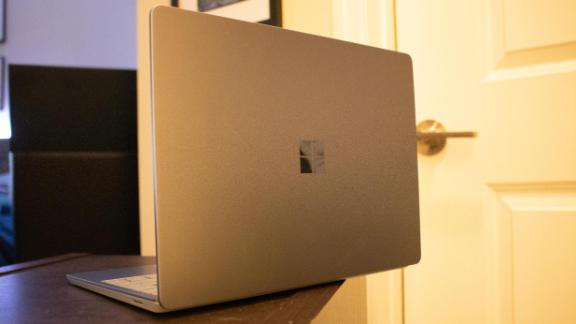
The Laptop Go is the newest laptop in Microsoft’s lineup, and was designed and built specifically for remote learning and working. It’s not going to blow you away with its impressive speed or display, but it’s not supposed to.
With a starting price of $549.99, the Laptop Go is meant to be affordable and, yet, fully capable when it comes to common computer tasks.
As we discussed in our review of the Laptop Go, you’ll likely want to skip the entry-level model, and instead opt for the $699 version that comes with a faster Intel Core i5 processor, 8GB or RAM and a 128GB SSD.
Oh, and it also gains a fingerprint reader built into the power button so you can quickly unlock your laptop without entering complicated passcodes.
It looks every bit like a Surface Laptop, from the colors, to the 12.4-inch PixelSense display, every aspect of the design screams Microsoft.
As is the case with the Surface Go 2, the Laptop Go ships with Windows 10S activated out of the box. Again, it’s a streamlined version of Windows 10 with various restrictions that some (alright, many) users will find too restrictive. Thankfully you can disable it and access the full Windows 10 experience.
Overall, the compact and affordable priced Laptop Go is fast enough and has battery life that’s long enough for someone who needs a laptop to get work done on, and doesn’t want to spend a fortune.
Surface Laptop 3
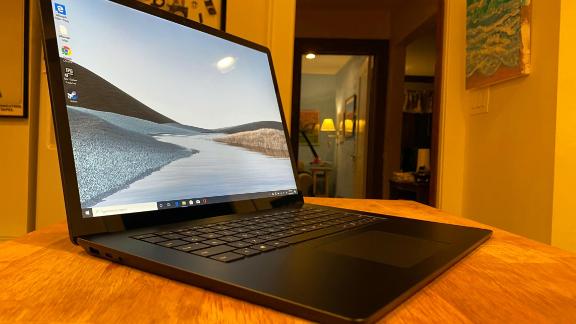
For someone who needs or wants a little more from their laptop, enter the Surface Laptop 3. It comes in two different sizes, with screens measuring 13.5 and 15-inches, respectively. As such, pricing varies as well. The 13-inch model starts at $999, while the bigger model jumps up to $1,199.
There are several different builds and configurations, with the main determining factor being what size of display you want.
For the 13.5-inch models, you can get anything ranging from an Intel Core i5 processor, 8GB of RAM and 128GB of SSD storage up to an Intel Core i7, 16GB of RAM and 1TB of SSD storage for $2,399.
The configurations for the 15-inch model look different, namely because instead of Intel processors, you’re looking at AMD processors. Specifically, the entry level model comes with the AMD Ryzen 5 3580U, 8GB of RAM and 128GB of SSD storage for $1,199. While the high-end model tops out at $2,799, with AMD’s Ryzen 7 3780U, 32GB of RAM and 1TB of SSD storage.
All of those specs don’t mean much without real world impressions of performance. We’ve reviewed both models, with the 15-inch model earning the title of “jack of all trades” thanks to its strong performance, built-in touchscreen that works with Surface pens, and battery life that powered through anything we could throw at it (within reason, of course).
If you want a true laptop from Microsoft, the Laptop 3 is your go-to. The biggest question shouldn’t come down to which processor you want, but how big or small you want the screen to be. From there, it’s an easy choice.
Surface Book 3
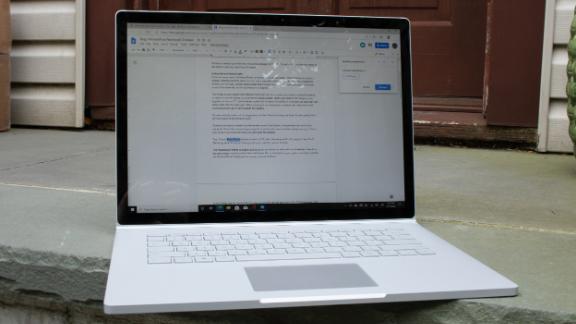
Mircosoft’s Surface Book 3 is unlike any other device in its lineup. From the impressive hinge that actually folds as you close the lid, to a screen that can be detached from the deck of the laptop, converting it into a dedicated tablet.
Like the Surface Laptop 3, the Surface Book 3 comes in two sizes — 13.5-inches and 15-inches. You’re going to pay extra for the fancy features that the Book 3 brings, with the smaller model starting at $1,600, while the 15-inch version starts at $2,299.
Unlike the Laptop 3, the Book 3 uses Intel processors across the board. Scaling from an Intel Core i5 to a Core i7, depending on your configuration. Additionally, you can build a Book 3 with up to 32GB of RAM and 2TB of storage.
In addition to those beefy specs, you can even outfit the Book 3 with a Nvidia GeForce GTX 1660 Ti with Max-Q graphics card which will speed up video and photo editing, and even let you use the Book 3 as a gaming computer for occasional sessions.
When we tested the Book 3 and thoroughly enjoyed our experience, save for the way too small trackpad on the 15-inch model. It’s probably a better fit on the smaller version, but we struggled to make the best of it on our test unit.
The Surface Book 3 is designed to be a workhorse laptop, and when you need it, a tablet that can keep up with any other tablet on the market. You don’t get the benefit of the faster GPU (that lives under the keyboard), but that doesn’t take away from the overall experience
If you need the best portable computer Microsoft has to offer, be it for video editing or occasional gaming, the Book 3 is where it’s at.
"right" - Google News
January 26, 2021 at 05:55AM
https://ift.tt/3a7uDNY
Microsoft Surface laptops: Which one is right for you? - CNN
"right" - Google News
https://ift.tt/32Okh02
Bagikan Berita Ini














0 Response to "Microsoft Surface laptops: Which one is right for you? - CNN"
Post a Comment